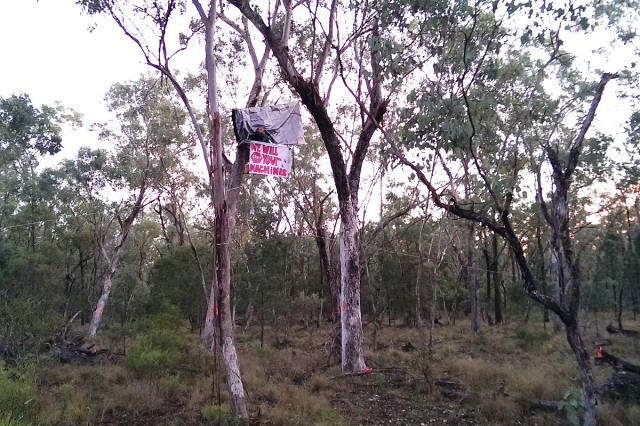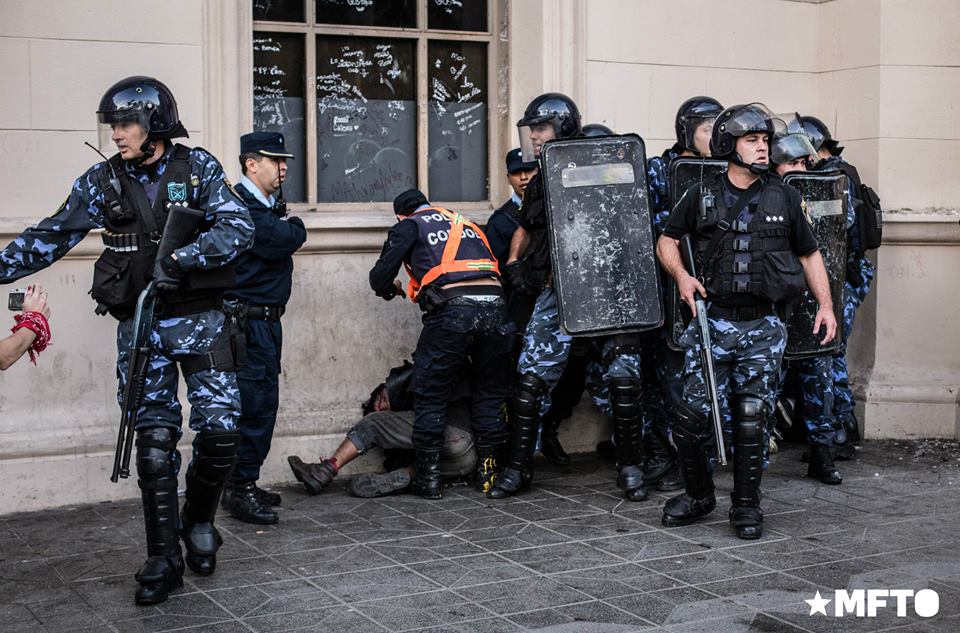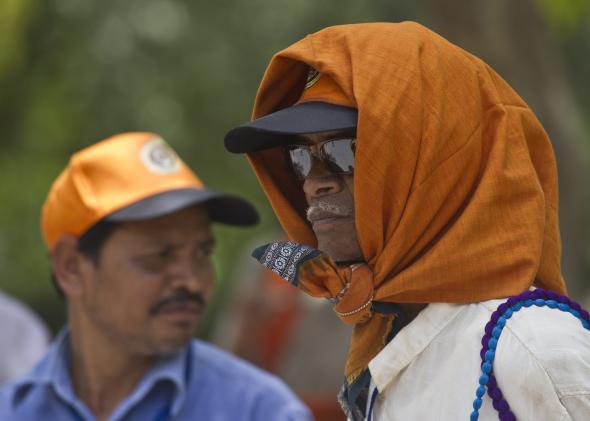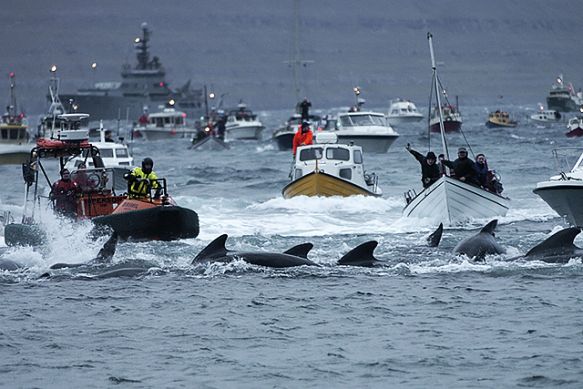 13th June Australia Whitehaven Coal yesterday announced it would halt its clearing of Leard State Forest until September following an injuncti
13th June Australia Whitehaven Coal yesterday announced it would halt its clearing of Leard State Forest until September following an injuncti
 13th June Australia Whitehaven Coal yesterday announced it would halt its clearing of Leard State Forest until September following an injunction in the NSW Land and Environment Court by the Maules Creek Community Council.
13th June Australia Whitehaven Coal yesterday announced it would halt its clearing of Leard State Forest until September following an injunction in the NSW Land and Environment Court by the Maules Creek Community Council.
The group, aided by the EDO, specifically appealed over the fact that many animals in the forest hibernate over winter and therefore were more likely to be killed by clearing during winter months.
The company voluntarily called a halt to clearing yesterday afternoon, just as the court’s decision on the injunction was due, until the results of a full hearing on the matter.
Maules Creek Community Council spokesperson, Phil Laird said, ‘We are pleased that Whitehaven has been forced to respond to our legitimate challenge in the court by today undertaking to stop clearing in Leard State Forest’.
The Maules Creek Community Council is arguing that Whitehaven is in breach of its development consent by winter/spring clearing of the forest. A breach of development consent contravenes the Environmental Planning and Assessment Act 1979.
‘This outcome today sends a strong message to coal mining companies across NSW and to the NSW government: if they will not enforce the law, then the community is prepared to step up and do it themselves’ Mr Laird said.
‘We appreciate the action taken by Whitehaven today and we will be preparing to vigorously pursue the full legal challenge,’ he added.
The new Maules Creek coalmine project involves a total clearing of 1664 hectares of forest, which currently provides habitat for threatened species including bats, koalas, forest owls, the Swift Parrot and the Regent Honeyeater.
The Nature Conservation Council of NSW has welcomed Whitehaven Coal’s decision to adhere to the conditions of its development consent.
‘This is a clear victory for community members who have been working tirelessly to protect this forest and the region’s water resources,’ campaigns director Kate Smolski said.
‘The decision to stop winter clearing does not end the fight to save Leard Forest, but it does at least give hibernating native animals a fighting chance to escape the bulldozers.
‘It is regrettable the NSW government did not enforce the conditions of its own consent for this atrocious mine, leaving Maules Creek Community Council little alternative but to take legal action.
‘State and federal laws have failed to protect this important natural area, demonstrating the need for deep reform to protect important natural places from coal mining.
‘Until that reform occurs, community groups will continue to seek remedy in the courts, and ordinary people will feel compelled to take direct action in the forest.
‘The Maules Creek mine will tear out the heart of Leard Forest, destroy one of the largest remnant areas of wildlife habitat in western NSW, threaten groundwater resources, and have a lasting negative impact on the local community of Maules Creek. This project should never have been approved.’
Greens NSW MP and environment spokesperson, Dr Mehreen Faruqi has also welcomed news.
‘This decision… proves community concerns were justified. It is clear that Whitehaven saw the writing on the wall and went for an undertaking before it was ordered to by the court,’ Dr Faruqi said.
‘Unfortunately, much clearing has already taken place.
‘I have seen with my own eyes just yesterday the section of the forest bulldozed by Whitehaven Coal, presumably in anticipation of a suspension.
‘It is outrageous that Whitehaven Coal was allowed to undertake winter clearing in the first place. This was completely unnecessary.
‘There needs to be an investigation into how these approvals were granted by the NSW government in the first place, as large tracts of endangered ecological communities have been cleared and cannot be replaced or offset.
‘I was also disturbed to see valuable public resources being used to benefit a mining company, with the government ordering police to set up roadblocks on public roads and search cars.
‘The government should be protecting the Leard Forest, not big coal.
‘In a democratic society, the public have the right to protest peacefully and I have been inspired by the activists standing up to protect our environment and our wildlife.
‘The Greens and many in the community are opposed to this massive coal mining project because of its destructive impacts on biodiversity, cultural heritage and its massive contribution to climate change: allowing clearing during the winter months further compounded these damaging impacts.
‘Congratulations to the grassroots community groups and the Environmental Defenders Office that brought forward this legal challenge. The Greens will continue campaigning to stop this coal mine completely’ she concluded.

 16th June One of the three Brazilian children who released
16th June One of the three Brazilian children who released  16th June One of the three Brazilian children who released white doves during the World Cup opening ceremony used the occasion to demand recognition of Indian land rights – but his protest was censored by
16th June One of the three Brazilian children who released white doves during the World Cup opening ceremony used the occasion to demand recognition of Indian land rights – but his protest was censored by 
 15th June from http://inthebellyofthebeast.noblogs.org The local, now national media scum since 12th June last Thursday have been having a field day about the arrest of an individual regarding the 4 arson attacks on c
15th June from http://inthebellyofthebeast.noblogs.org The local, now national media scum since 12th June last Thursday have been having a field day about the arrest of an individual regarding the 4 arson attacks on c





 14th June
14th June 14th June
14th June 13th June In recent years, the annual dolphin hunts in Taiji, Japan, have garnered headlines worldwide and sparked outrage among activists, scientists, celebrities,
13th June In recent years, the annual dolphin hunts in Taiji, Japan, have garnered headlines worldwide and sparked outrage among activists, scientists, celebrities, 13th June In recent years, the annual dolphin hunts in Taiji, Japan, have garnered headlines worldwide and sparked outrage among activists, scientists, celebrities, and diplomats. But half a world away, in the North Atlantic nation of the Faeroe Islands, a similar slaughter has received far less scrutiny.
13th June In recent years, the annual dolphin hunts in Taiji, Japan, have garnered headlines worldwide and sparked outrage among activists, scientists, celebrities, and diplomats. But half a world away, in the North Atlantic nation of the Faeroe Islands, a similar slaughter has received far less scrutiny. 13th June Australia Whitehaven Coal yesterday announced it would halt its clearing of Leard State Forest until September following an injuncti
13th June Australia Whitehaven Coal yesterday announced it would halt its clearing of Leard State Forest until September following an injuncti 13th June Australia Whitehaven Coal yesterday announced it would halt its clearing of Leard State Forest until September following an injunction in the NSW Land and Environment Court by the Maules Creek Community Council.
13th June Australia Whitehaven Coal yesterday announced it would halt its clearing of Leard State Forest until September following an injunction in the NSW Land and Environment Court by the Maules Creek Community Council. 13th June After an eight-year struggle, Chile’s grassroots and environmental movements have successfully won the rejection of five planned megadams on two Patagonian rivers!
13th June After an eight-year struggle, Chile’s grassroots and environmental movements have successfully won the rejection of five planned megadams on two Patagonian rivers!
 11th June
11th June  11th June
11th June